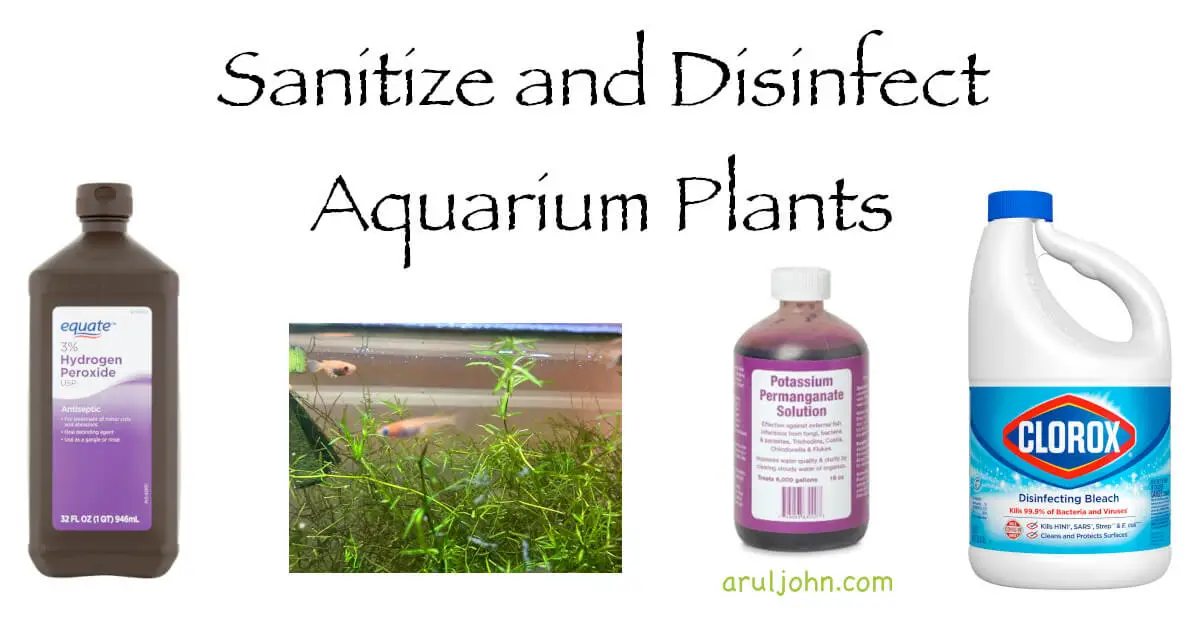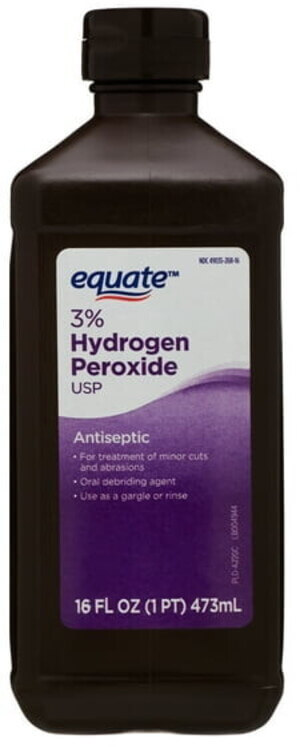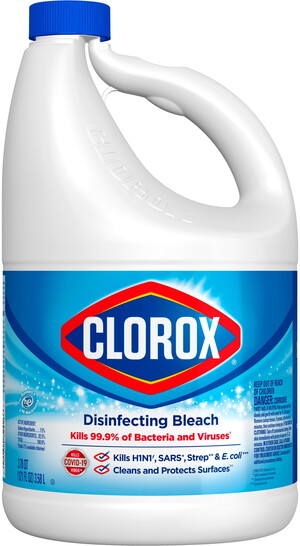You bought aquatic plants from a store or hobbyist. Should you disinfect and clean them? Absolutely! This blog post shows how to sanitize new aquarium plants.
 How to disinfect aquarium plants before putting them inside your fish tanks
How to disinfect aquarium plants before putting them inside your fish tanks
Precautions While Introducing New Plants to Your Aquarium
Many aquarium hobbyists buy plants from various sources, including Petsmart, Petco, Craigslist, Facebook Marketplace and general meetups. As a precautionary measure, it is a good idea to sanitize the plants before letting them be a part of your aquatic ecosystem.
When you introduce new aquatic plants into your aquariums, you risk critters like snails that can hitchhike their way in, parasites, predators like dragonfly nymphs and damselflies and even worse, chemical contaminants and pollutants that would have been sprayed or added in the water bodies of origin.
It is good to first quarantine the new plants, and then disinfect or sanitize the plants.
In this blog post, we will use the terms sanitize, disinfect and clean interchangeably for the aquatic plants.
Disinfect Aquarium Plants using Hydrogen Peroxide
 How to disinfect aquarium plants with hydrogen peroxide h2o2
How to disinfect aquarium plants with hydrogen peroxide h2o2
Hydrogen peroxide, or H
Before you add the plants to your fish tanks, to sanitize them with hydrogen peroxide, do this:
- You may wear gloves if your skin is sensitive to hydrogen peroxide.
- Add 3 ml of hydrogen peroxide to 1 gallon of water in a clean bucket.
- Dip the new aquatic plants completely in it for about 3 minutes. Shake them a little bit.
- After 3 minutes, remove the aquatic plants from the bucket.
- If you keep them for more than 5 minutes, the plants can melt away.
- Remove the plants from the bucket and rinse the plants in dechlorinated water.
- Let the plants sit for 5 - 10 minutes in the dechlorinated water.
- The plants should be sanitized now. You may add them to your aquarium.
Disinfect Aquarium Plants using Potassium Permanganate
 How to disinfect aquarium plants with potassium permanganate
How to disinfect aquarium plants with potassium permanganate
Potassium permanganate or KMnO4 is a strong oxidizing agent that disinfects by killing bacteria, algae, fungii and parasites, among other things. It needs to be stored in the dark, or away from light exposure, so it's best to keep it away from direct light exposure.
Before you add the plants to your fish tanks, to sanitize them with potassium permanganate, do this:
- You may wear gloves if your skin is sensitive to KMnO4.
- Add 12 mg of potassium permanganate to 1 gallon of water in a clean bucket. It will form a purple solution.
- If you are using a liquid solution, then add a few drops to 1 gallon of water.
- Dip the new aquatic plants completely in it for about 15 minutes. Shake them a little bit.
- After 15 minutes, remove the aquatic plants from the bucket and rinse the plants in dechlorinated water.
- Let the plants sit for 5 - 10 minutes in the dechlorinated water. Shake often.
- The plants should be sanitized now. You may add them to your aquarium.
Disinfect Aquarium Plants using Bleach
 How to disinfect aquarium plants with Clorox bleach
How to disinfect aquarium plants with Clorox bleach
Bleach is a strong and powerful disinfectant, probably the strongest so far.
Regular bleach can kill viruses, algae, parasites, snails and pretty much all livestock in the aquarium.
If you decide to use bleach to sanitize your new aquarium plants, do this:
- Do wear gloves.
- Make sure it is regular bleach and not concentrated bleach.
- Add water to bleach in the ratio 19:1, that is 19 cups of water to 1 cup of bleach in a clean bucket.
- Dip the new aquatic plants in the solution for a maximum of 2 minutes.
- If you soak the plants for more than 120 seconds, you will be left with plant salad.
- Remove the plants from the bucket and rinse them well in dechlorinated water.
- Let the plants sit for 5 - 10 minutes in the dechlorinated water.
- The plants should be sanitized now. You may add them to your aquarium.
What Happens If I Don't Sanitize My New Aquatic Plants?
If these steps are a hassle and you don't want to sanitize your new plants, you risk all of these:
Snail Infestation
Malaysian trumpet snails, bladder snails, pond snails, ramshorn snails and other types of snails or their eggs can hitchhike. Once they enter, they can breed and multiply depending on several factors.
Now, snails are not necessarily bad. I have Malaysian trumpet snails and ramshorn snails and love them; in fact, I have too few in my tanks and don't mind if they increase in number. However, majority of people want snail-free tanks and overfeeding can cause a population explosion, which is not desirable.
Predators
Dragonfly and damselfly nymphs can come out of nowhere and eliminate the inhabitants of your tank, especially baby fish and invertebrates like shrimp. Their eggs hitchhike on plants, so if you buy plants, it's best to sanitize them and get rid of their eggs, just in case.
Parasites
There are parasites that can always sneak in, with someone else's plants, and you will not know until your fish and shrimp start dying in a horrible way. A dip with any of these three disinfecting agents can get rid of any potential parasites.
Algae and Fungus
Existing algae and fungus on plants that you have just bought can spread to other plants in your aquarium, and this will be pain to get rid of. It's better to get rid of them before introducing plants containing potential algae in your tanks.
Pesticides and Pollutants
People who get aquatic plants from the local canal or lake always risk adding potential chemical pollutants to their aquariums. Doing this can eliminate livestock and plants in your existing tanks.
There are also some aquarists and suppliers that use pesticides to disinfect their tanks, but the residue can be harmful to your aquariums.
Conclusion
You can use any method. In my personal experience, the most effective is the bleach method, while the safest method is the hydrogen peroxide method. Your experiences may not be the same as mine.
Related Posts
If you have any questions, please contact me at arulbOsutkNiqlzziyties@gNqmaizl.bkcom. You can also post questions in our Facebook group. Thank you.